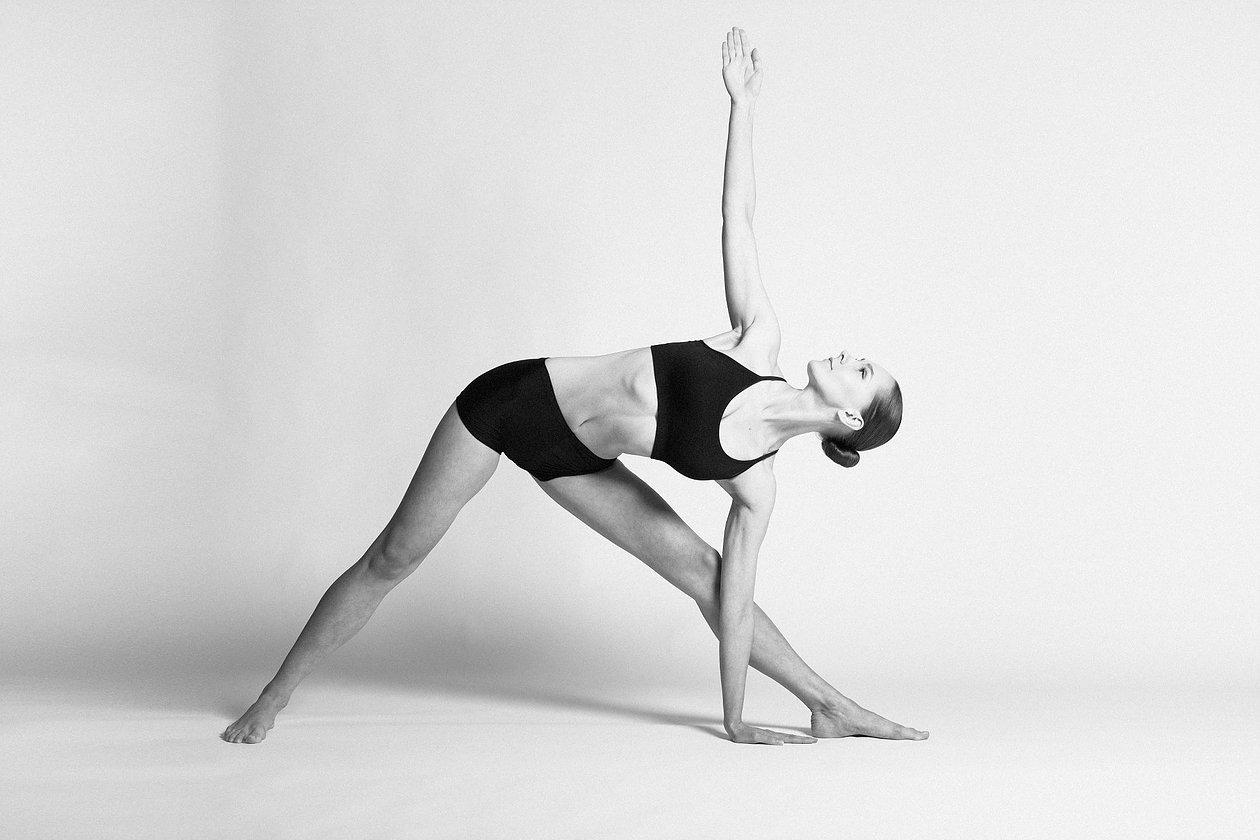Yoga Asana: What and Why?

Om
The first thing yoga enthusiasts come across and practice are asanas, which are, in most simplified sense are postures or positions of the body. The important word here is "simplified". For simplification makes information more easily available for a greater number of people. Yet it also inevitably leads to loss of depth and understanding, to watering down of the teaching. Patanjali Yoga Sutras, one of fundamental yoga texts states:
Sthirasukham Aasanam: "Posture Is That Which Is Firm And Pleasant"
(Chapter 2, On Concentration, Swami Vivekananda translation).
And let's face it, most yoga postures do not appear to be stable nor comfortable, moreover it seems impossible for a beginner to twist, push and pull one's body in such contorted positions. What then did the creator or creators of Yoga Sutras mean by this statement? And why does the physical body's position have such importance in what is essentially a spiritual practice of going beyond the body as we perceive it?
We are born into and spend our whole lives in this body that we sustain, move around, dress up and repair when necessary for the rest of our lives. There is no going around it: all that we do in the world is done through this very body. It is our only home and only instrument for action. For any sustained spiritual practice one needs a fairly well-functioning body. One great contemporary yoga teacher who never included asana practice in his teachings, when asked by his students why they were not practising asanas replied: "we are practicing the most important one - sitting". And if you ever tried to sit still with spine erect for even a few minutes, never mind sustaining meditation posture for hours, you know that on a physical level discomfort, restlessness and aches come without a fail. For the possibility of progress (or regress, depending on where you are looking from) it is essential to bring stillness to one's mind. And by stillness we do not mean absence of thought, but slowing down of the constant flow of internal dialogue just enough to become aware of its content and the pauses in between. There is no easier way to do so, especially in the beginning and especially for those of us living busy city lives, then letting one's body become free of movement.
Asana practice opens, relaxes and trains the body for sustained sitting in more advanced meditative practices. On the most visible physical level it loosens tight muscles and joints and sustains fit and toned body. On physiological level it increases circulation, stimulates or slows glands activity, keeps organ tissues fit and free of sagging and much more. On the more subtle level asanas open up blockages that restrict the movement of prune (or subtle life force energy) in the body. It is a great counter-balance for practice of stillness. For movement there must be stillness, for a breath in there must be a breath out, for action - inaction, for life - death.
Any serious practitioner of yoga asana requires a solid foundation - a yoga mat which will support ones practice, support in both literal and metaphorical sense. Good yoga mat should be practical, firm to prevent ankle rolling injuries, yet soft enough for comfortable cushioning, it should lay flat without rolling up and stay steadfast on most surfaces. These are essential qualities for safe and uninterrupted practice without need to reposition or readjust the mat. In addition to these, when choosing your mat, it is a good idea to consider how does the material it's made of effects your immediate environment, does it amid any harmful compounds, especially with heat when exposed to direct sun and sweat that comes with any effective workout. Going deeper, consider how the colour and design of your mat affects your state of mind, is it calming, stimulating or both, do your eyes get tired or you feel refreshed after fixing your gaze at it for a period of time? And last but not least, how does it effect the environment overall? The more durable your mat is, the more use you'll get out of it, not only saving money in a long run, but preventing necessity of replacing it every year and adding to landfills and increasing carbon footprint.
Om